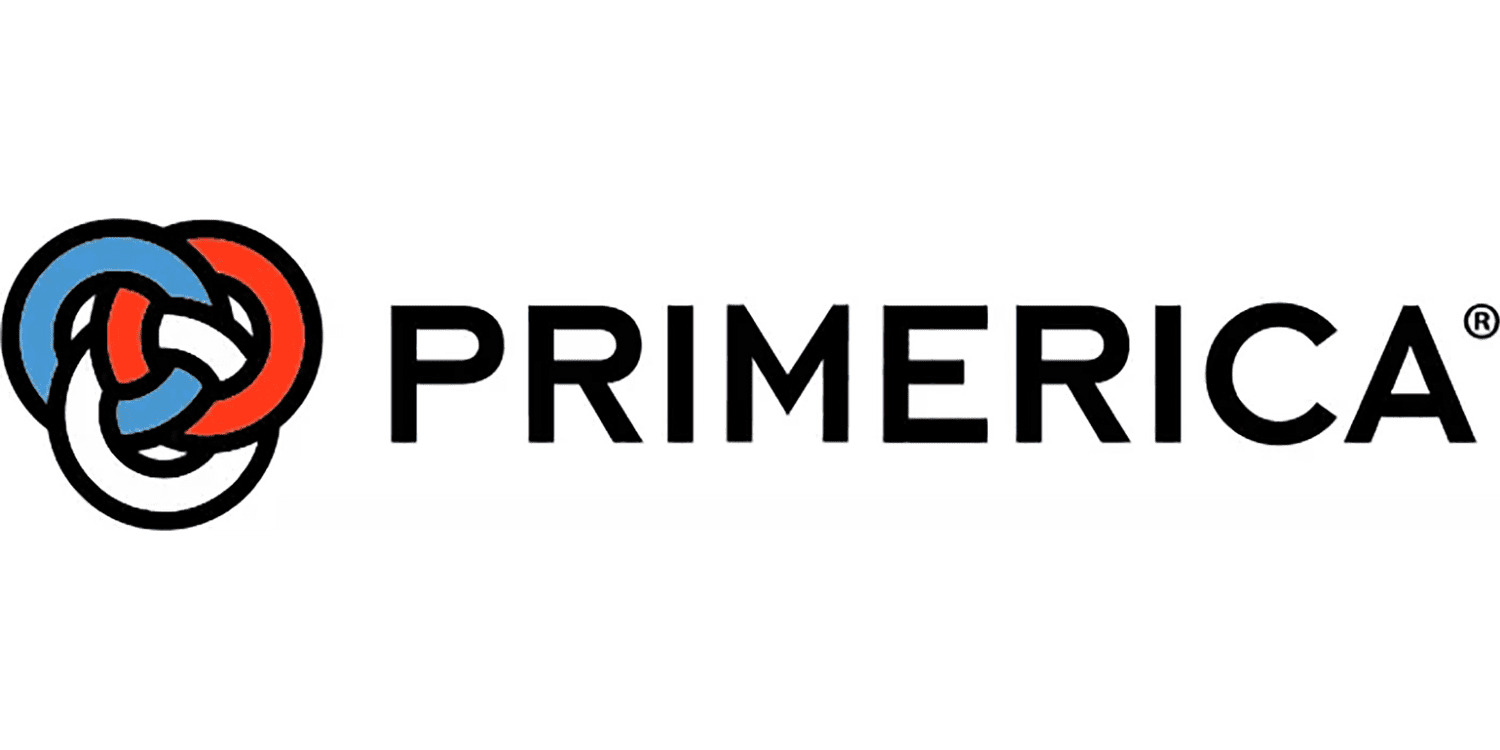

Finance
How To Get Leads For Life Insurance
Modified: December 30, 2023
Looking for ways to generate leads for life insurance? Discover effective strategies and tips on how to maximize your finance-focused lead generation for long-term success.
(Many of the links in this article redirect to a specific reviewed product. Your purchase of these products through affiliate links helps to generate commission for LiveWell, at no extra cost. Learn more)
Table of Contents
- Introduction
- Importance of Lead Generation for Life Insurance
- Understanding the Target Market for Life Insurance
- Creating an Effective Lead Generation Strategy
- Building a Strong Online Presence
- Utilizing Social Media for Lead Generation
- Email Marketing and Lead Nurturing
- Content Marketing for Generating Life Insurance Leads
- Leveraging Referrals and Word-of-Mouth Marketing
- Networking and Building Relationships
- Harnessing the Power of SEO for Lead Generation
- Tracking and Analyzing Lead Generation Efforts
- Conclusion
Introduction
Welcome to the world of life insurance, where financial protection meets peace of mind. Life insurance is a crucial aspect of financial planning, offering individuals and their loved ones security in the face of unexpected events. However, in order to thrive in the competitive insurance market, companies must have a consistent flow of leads – potential customers who have expressed interest in their services.
Lead generation is the process of attracting and capturing the attention of potential customers, with the goal of converting them into actual clients. It is a vital aspect of any business, but particularly in the insurance industry, where trust and credibility play significant roles. Having a solid lead generation strategy can help insurance companies reach their target audience, increase conversions, and ultimately grow their business.
In this article, we will explore various strategies for generating leads in the life insurance industry. Whether you are a life insurance agent, a brokerage firm, or an insurance company, understanding the importance of lead generation is paramount to your success. By implementing these strategies, you can streamline your marketing efforts and consistently attract high-quality leads for your life insurance business.
Before we dive into the different strategies, it is important to recognize the importance of understanding your target market. Life insurance is a highly personal and sensitive product, so tailoring your approach to meet the needs and preferences of your prospective clients is essential. Through market research and analyzing demographic data, you can identify your ideal customer profile and create targeted marketing campaigns that resonate with them.
Now, let’s explore the various strategies that can help you generate leads for your life insurance business, and ultimately, drive growth and success in this dynamic industry.
Importance of Lead Generation for Life Insurance
Lead generation is the lifeblood of any successful business, and the life insurance industry is no exception. Generating quality leads is crucial for the growth and success of your life insurance business. Here’s why:
1. Expansion of Customer Base: Lead generation helps you expand your customer base by attracting potential clients who are actively seeking life insurance coverage. By proactively reaching out to these prospects, you have the opportunity to convert them into loyal customers.
2. Increased Sales and Revenue: Quality leads have a higher likelihood of converting into paying customers. By consistently generating leads, you can increase your sales volume and ultimately boost your revenue.
3. Building Trust and Credibility: The life insurance industry relies heavily on trust and credibility. When you generate leads and establish contact with potential clients, you have the opportunity to build a relationship of trust and demonstrate your expertise. This, in turn, increases the likelihood of converting leads into long-term customers.
4. Targeted Marketing Efforts: Lead generation allows you to focus your marketing efforts on your target audience. By understanding the demographics, interests, and pain points of your potential clients, you can create personalized marketing campaigns that resonate with them. This not only improves your chances of converting leads but also maximizes your return on investment (ROI) by reaching the right people with the right message.
5. Competitive Advantage: In the highly competitive life insurance industry, generating a consistent stream of leads gives you a competitive edge. It allows you to maintain a steady flow of new business and stay ahead of your competitors.
6. Long-term Growth: By nurturing and converting leads into satisfied customers, you can achieve long-term growth for your life insurance business. Building a strong customer base through lead generation lays the foundation for future success and sustainability.
Ultimately, lead generation is about creating opportunities. It enables you to connect with potential customers, showcase the value of life insurance, and address their specific needs and concerns. By implementing effective lead generation strategies, you can fuel the growth of your life insurance business and make a positive impact on the lives of individuals and families.
Understanding the Target Market for Life Insurance
When it comes to lead generation for life insurance, understanding your target market is key. The success of your lead generation efforts hinges on your ability to identify and connect with the right audience. Here’s how you can gain a deeper understanding of your target market:
1. Demographic Analysis: Start by analyzing demographic data to identify the characteristics of your ideal life insurance customers. Consider factors such as age, gender, marital status, income level, and occupation. This analysis will help you tailor your marketing messages and strategies to resonate with your target market.
2. Life Stage Considerations: Life insurance needs vary depending on an individual’s life stage. Young professionals may be more focused on income protection and starting a family, while retirees may be interested in legacy planning. Consider the life stages of your target market to understand their unique insurance needs and craft targeted messaging accordingly.
3. Financial Awareness: Assess the financial awareness of your target market. Are they already aware of the importance of life insurance, or do they need education on the topic? Understanding their level of knowledge and awareness will help you customize your marketing materials and communication approach.
4. Pain Points and Challenges: Dive deeper into the pain points and challenges your target market faces regarding life insurance. Identify common concerns, such as affordability, understanding policy options, or navigating the application process. By addressing these pain points in your marketing materials, you can position yourself as a trusted advisor and problem-solver.
5. Consumer Behavior: Study the consumer behavior of your target market. Are they more likely to research insurance products online or seek recommendations from friends and family? Understanding how your target market makes purchasing decisions will help you tailor your lead generation strategies effectively.
6. Competitive Landscape: Analyze your competitors and their target market. What sets you apart from them? Understanding the unique value you offer can help you differentiate yourself in a crowded market and attract the right prospects.
7. Customer Feedback and Surveys: Engage with your existing customers to gather feedback and insights. Conduct surveys or interviews to understand their motivations for purchasing life insurance and their satisfaction with the process. This feedback can provide valuable information for refining your lead generation strategies.
By thoroughly understanding the demographics, life stages, pain points, consumer behavior, and competitive landscape of your target market, you can develop highly targeted and compelling lead generation campaigns. This will increase your chances of attracting the right prospects and converting them into loyal customers who recognize the value of life insurance. In the next sections, we will explore effective lead generation strategies that can help you reach and engage your target market effectively.
Creating an Effective Lead Generation Strategy
Generating leads for your life insurance business requires a well-thought-out strategy that encompasses various channels and tactics. Here are key steps to create an effective lead generation strategy:
1. Define Your Goals: Start by setting clear and specific goals for your lead generation efforts. Do you want to increase the number of leads generated per month? Improve the lead-to-customer conversion rate? Setting measurable goals will help you track the success of your strategy and make necessary adjustments along the way.
2. Identify Your Unique Selling Proposition (USP): Determine what distinguishes your life insurance offerings from competitors. Your USP could be competitive pricing, personalized customer service, diverse policy options, or specialized coverage for unique demographics. Highlighting your USP in your marketing materials will help attract leads who resonate with your unique value proposition.
3. Create Compelling Content: Develop high-quality content that educates and engages your target market. Blog posts, articles, ebooks, and guides can showcase your expertise and build credibility. Address common life insurance questions and concerns, providing valuable information that helps leads make informed decisions. Optimize your content with relevant keywords to improve search engine visibility.
4. Optimize Your Website for Lead Generation: Ensure your website is user-friendly and optimized for lead capture. Include prominent calls to action (CTAs) on relevant pages, enticing visitors to take the next step in their buying journey. Implement lead capture forms, offering valuable resources or free consultations in exchange for contact information.
5. Leverage Social Media Channels: Utilize social media platforms to expand your reach and engage with potential leads. Develop a strong presence on platforms relevant to your target market, such as Facebook, LinkedIn, or Instagram. Share informative content, engage with followers, and run targeted social media campaigns to attract new leads.
6. Utilize Pay-Per-Click (PPC) Advertising: Consider running PPC advertising campaigns to drive traffic and generate leads. Platforms like Google Ads allow you to target specific keywords and demographics, ensuring your ads appear to the right audience at the right time. Optimize your landing pages to provide a seamless user experience and improve conversion rates.
7. Collaborate with Referral Partners: Build relationships with professionals who can refer potential leads to you, such as real estate agents, financial advisors, or estate planning attorneys. Offer to reciprocate and refer leads to them, creating a mutually beneficial partnership.
8. Stay Engaged with Email Marketing: Implement an email marketing strategy to nurture leads and stay top-of-mind. Create personalized email campaigns that provide valuable content, address common concerns, and offer exclusive promotions. Use segmentation to tailor your messages to different segments of your target market.
9. Monitor and Analyze Performance: Regularly track and analyze the performance of your lead generation efforts. Utilize tools like Google Analytics to measure website traffic, conversion rates, and bounce rates. Identify areas for improvement and optimize your strategy accordingly.
Remember, an effective lead generation strategy is an ongoing process. Continuously monitor and adjust your tactics based on the results you achieve. By taking a proactive approach to lead generation, you can capture the attention of potential customers and grow your life insurance business.
Building a Strong Online Presence
In today’s digital age, having a strong online presence is essential for generating leads for your life insurance business. Building an online presence allows you to reach a wider audience, establish credibility, and connect with potential customers. Here are some key strategies to build a strong online presence:
1. Develop a Professional Website: Your website serves as the online face of your business. Ensure that it is well-designed, visually appealing, and user-friendly. Clearly communicate your unique value proposition, showcase your offerings, and provide clear and easy-to-find contact information.
2. Optimize for Search Engines: Implement search engine optimization (SEO) techniques to improve your website’s visibility in search engine results. Conduct keyword research and optimize your website copy, meta tags, and headings to rank higher in relevant searches. Focus on local SEO to target potential customers in your area.
3. Create Valuable Content: Develop a content strategy that includes regular blog posts, articles, and informative guides. Provide valuable insights and advice related to life insurance that will engage your target market. Content marketing establishes you as a trusted authority and attracts organic traffic to your website.
4. Engage on Social Media: Build a presence on social media platforms that align with your target market. Create compelling profiles and regularly share relevant content, engage with your audience, and promote your services. Use social media ads to target specific demographics and drive traffic to your website.
5. Build an Email List: Implement lead capture forms on your website to collect visitor email addresses. Utilize email marketing to nurture leads and stay connected with your audience. Send regular newsletters, promotions, and educational content to build trust and encourage leads to take action.
6. Online Advertising: Leverage online advertising channels, such as Google Ads or social media ads, to reach a highly targeted audience. Develop effective ad campaigns that highlight your unique selling proposition and drive leads to your website or landing pages.
7. Online Review Management: Encourage satisfied customers to leave reviews on platforms like Google My Business, Yelp, or Trustpilot. Positive reviews enhance your online reputation and improve your credibility. Respond promptly to both positive and negative reviews to demonstrate your commitment to customer satisfaction.
8. Engage in Online Communities: Participate in online forums, discussions, and industry-specific groups to connect with potential customers. Offer helpful advice and insights, positioning yourself as an industry expert. This can lead to valuable referrals and build your reputation in the online community.
9. Monitor Your Online Presence: Regularly monitor your online presence and respond to comments, inquiries, or mentions promptly. Use social listening tools to track mentions of your brand or industry keywords, and engage with relevant conversations. Be proactive in managing your online reputation.
Building a strong online presence requires consistency and ongoing effort. By having a well-designed website, implementing SEO strategies, creating valuable content, engaging on social media, and utilizing online advertising, you can establish a robust online presence that attracts quality leads and grows your life insurance business.
Utilizing Social Media for Lead Generation
Social media has become a powerful tool for lead generation in the digital age. With billions of active users, platforms like Facebook, Instagram, LinkedIn, and Twitter offer immense opportunities to connect with potential customers. Here’s how you can effectively utilize social media for lead generation:
1. Identify the Right Platforms: Determine which social media platforms are most relevant to your target market. For example, Facebook is a versatile platform that caters to a wide range of demographics, while LinkedIn is ideal for B2B lead generation. Focus your efforts on platforms where your target audience is most active.
2. Create a Compelling Profile: Optimize your social media profiles to represent your brand effectively. Use high-quality visuals, include a clear description of your services, and provide a link to your website. For credibility, display any relevant certifications or accolades prominently.
3. Share Engaging Content: Regularly share valuable and relevant content on your social media platforms. This can include blog posts, articles, videos, infographics, or industry updates. Focus on providing valuable insights and addressing the pain points and questions your target audience may have.
4. Run Targeted Ads: Take advantage of the targeting options available on social media platforms to reach your desired audience. Design compelling ads that highlight the benefits of life insurance and incentivize users to take action. Use eye-catching visuals and concise, persuasive copy to drive clicks and conversions.
5. Engage with Your Audience: Actively engage with your audience by responding to comments, messages, and inquiries in a timely manner. Personalize your interactions and provide helpful information or solutions. Building genuine relationships and demonstrating your expertise can build trust and increase the likelihood of converting leads into customers.
6. Leverage Groups and Communities: Join relevant groups and online communities in your industry. Participate in discussions, offer valuable insights, and establish yourself as an authority in the field. This can lead to natural and organic lead generation as you build relationships and gain visibility within these communities.
7. Host Webinars or Live Q&A Sessions: Utilize live video features on social media platforms to engage with your audience in real-time. Host webinars or Q&A sessions where you can address common concerns, provide educational content, and answer questions about life insurance. This interactive approach can generate interest and help you establish credibility.
8. Foster User-Generated Content (UGC): Encourage your audience to share their experiences with your brand or specific life insurance products. User-generated content, such as testimonials or reviews, can serve as powerful social proof and inspire trust in potential leads.
9. Analyze and Adapt: Regularly analyze the performance of your social media efforts using analytics tools provided by the platforms or third-party software. Track metrics such as engagement, reach, click-through rates, and lead conversion to identify what strategies are working and make adjustments as needed.
Remember, social media is not just about self-promotion, but about building connections and providing value. By consistently sharing engaging content, engaging with your audience, and leveraging the targeting capabilities of social media platforms, you can effectively generate leads and grow your life insurance business.
Email Marketing and Lead Nurturing
Email marketing is a powerful tool for lead nurturing in the life insurance industry. It allows you to build relationships with potential customers, educate them about the benefits of life insurance, and ultimately convert them into loyal clients. Here’s how you can effectively leverage email marketing for lead nurturing:
1. Segment Your Email List: Divide your email list into segments based on demographics, interests, or where they are in the buying journey. This segmentation allows you to send targeted and personalized emails that speak directly to the needs and preferences of each segment.
2. Offer Valuable Content: Provide valuable and relevant content in your emails. This can include informative articles, blog posts, case studies, or educational resources that address common questions and concerns related to life insurance. By offering valuable information, you position yourself as a trusted advisor and keep your brand top-of-mind for your leads.
3. Create a Drip Campaign: Develop a series of automated emails that are sent out at predetermined intervals. This drip campaign helps nurture leads through the buying journey, providing them with timely and targeted information. Gradually introduce your life insurance offerings, highlight the benefits, and address any objections they may have.
4. Personalize Your Emails: Personalization is key to effective lead nurturing. Use merge tags to include the lead’s name in the email subject or body. Additionally, tailor the content to their specific needs and interests based on the data you have collected. Personalized emails create a stronger connection and increase engagement.
5. Use Calls to Action (CTAs): Include clear and compelling calls to action in your emails. Whether it’s encouraging leads to schedule a consultation, request a quote, or download an informative guide, make it easy for them to take the next step. Use persuasive language and highlight the benefits of the action you want them to take.
6. Automate Email Workflows: Utilize marketing automation tools to create automated email workflows. Set up triggers that send emails based on specific actions or behaviors, such as when a lead signs up for a newsletter or visits a particular page on your website. This automation saves time and ensures consistency in your lead nurturing efforts.
7. A/B Test Your Emails: Experiment with different subject lines, content, or CTAs in your emails to identify which elements resonate best with your leads. A/B testing allows you to optimize your email campaigns for higher open and click-through rates. Continuously refine your approach based on the data and insights you gather from these tests.
8. Monitor and Analyze Results: Regularly track and analyze the performance of your email campaigns. Monitor metrics such as open rates, click-through rates, and conversions. Analyze the data to identify patterns, improve engagement, and optimize your lead nurturing strategy over time.
Remember, the key to successful email marketing and lead nurturing is providing value, fostering engagement, and building trust. By delivering personalized and valuable content, guiding leads through the buying journey, and continuously refining your approach based on data-driven insights, you can nurture and convert leads into satisfied customers for your life insurance business.
Content Marketing for Generating Life Insurance Leads
Content marketing is a powerful strategy for generating leads in the life insurance industry. By creating and distributing valuable and relevant content, you can attract, engage, and convert potential customers. Here’s how you can effectively leverage content marketing to generate life insurance leads:
1. Identify Your Target Audience: Start by understanding the needs, pain points, and demographics of your target audience. This information will help you create content that resonates with them and addresses their specific concerns related to life insurance.
2. Develop a Content Strategy: Create a content strategy that aligns with your overall business objectives. Determine the types of content you will produce, such as blog posts, articles, videos, or infographics. Map out a content calendar to ensure consistent delivery.
3. Provide Valuable and Educational Content: Create content that educates and informs your audience about life insurance. Address common questions, explain policy options, and provide tips for selecting the right coverage. By providing valuable information, you position yourself as a trusted expert and build credibility.
4. Optimize Your Content for Search Engines: Incorporate relevant keywords into your content to improve its visibility in search engine results. Conduct keyword research to identify the terms and phrases your target audience is searching for. Optimize your titles, headings, and meta descriptions for maximum impact.
5. Utilize Case Studies and Success Stories: Share case studies and success stories that highlight the positive outcomes your life insurance policies have provided. Showcase real-life examples of how life insurance has protected families, provided financial stability, or helped with estate planning. This social proof can be powerful for attracting potential customers.
6. Incorporate Visual Content: Use visual content, such as infographics, videos, or images, to enhance the appeal and engagement of your content. Visuals can help simplify complex concepts, increase retention, and make your content more shareable on social media platforms.
7. Call-to-Actions (CTAs): Include clear and compelling CTAs in your content to encourage readers to take the next step. Invite them to download a guide, request a quote, or sign up for a newsletter. The CTA should prompt action and provide a clear benefit to the reader.
8. Leverage Guest Blogging: Collaborate with industry experts, influencers, or complementary businesses to create guest blog posts. This allows you to tap into their audience and expand your reach. Ensure the content is valuable, relevant, and aligns with both parties’ target audience.
9. Promote Your Content: Don’t solely rely on organic reach to distribute your content. Promote it through social media channels, email newsletters, and online communities. Consider paid advertising to boost visibility and reach a wider audience.
10. Monitor and Evaluate Performance: Regularly monitor and evaluate the performance of your content marketing efforts. Track engagement metrics such as website traffic, time spent on page, social media shares, and lead conversions. Analyze the data to identify what is resonating with your audience and make necessary adjustments.
By creating valuable, educational, and optimized content, you can establish yourself as a trusted authority in the life insurance industry. This will not only attract leads but also build long-term relationships with customers who recognize the value of life insurance and the expertise you bring to the table.
Leveraging Referrals and Word-of-Mouth Marketing
Referrals and word-of-mouth marketing are powerful strategies for generating life insurance leads. When satisfied clients recommend your services to others, it not only brings in new leads but also builds trust and credibility for your business. Here’s how you can effectively leverage referrals and word-of-mouth marketing:
1. Provide Exceptional Customer Service: Delivering exceptional customer service is essential for generating positive word-of-mouth referrals. Focus on prompt communication, personalized interactions, and going above and beyond to meet your clients’ needs. When customers feel valued and well taken care of, they are more likely to recommend your services to others.
2. Ask for Referrals: Don’t be afraid to ask your satisfied clients for referrals. Let them know that you value and appreciate their recommendation. Consider offering incentives, such as referral bonuses or discounted premiums, as a token of appreciation for their referrals.
3. Develop a Referral Program: Create a structured referral program that encourages clients to refer their friends, family, and colleagues. Provide clear guidelines on how referrals can be made, the benefits of referring, and the rewards they can expect for successful referrals. Regularly communicate and remind your clients about the program to keep it top of mind.
4. Implement Customer Testimonials: Showcase positive reviews and testimonials from satisfied clients on your website, social media platforms, and marketing materials. Highlight the positive experiences and outcomes that your clients have had with your life insurance policies. Testimonials provide social proof and can greatly influence the purchasing decisions of potential leads.
5. Encourage Online Reviews: Request satisfied clients to leave online reviews on platforms such as Google My Business, Yelp, or social media. Positive online reviews not only enhance your online reputation but also generate trust and credibility among potential leads who are researching life insurance options.
6. Foster Relationships with Centers of Influence: Cultivate relationships with professionals who are in a position to refer potential leads to you. This can include real estate agents, financial advisors, attorneys, or accountants. Offer to support their clients with life insurance needs and reciprocate by referring business to them when opportunities arise.
7. Provide Referral Marketing Collateral: Create referral marketing collateral that makes it easy for your clients to refer your services. This can include referral cards, brochures, or digital assets that they can easily share with their contacts. Make sure these materials clearly outline the benefits of working with you and how referrals can be made.
8. Nurture Relationships with Referrers: Once you receive a referral, make it a priority to follow up promptly and provide exceptional service to the prospective lead. Keep the referrer informed of the progress and results. This not only shows your gratitude but also encourages them to continue referring others to you.
Remember, referrals and word-of-mouth marketing are driven by the positive experiences of your clients. By consistently delivering excellent service, implementing referral programs, and showcasing testimonials, you can tap into the powerful network of satisfied clients and leverage their recommendations to generate high-quality leads for your life insurance business.
Networking and Building Relationships
Networking and building relationships are essential components of generating life insurance leads. By connecting with individuals and fostering meaningful relationships, you can establish trust, expand your professional network, and generate valuable referrals. Here’s how you can effectively network and build relationships to generate leads for your life insurance business:
1. Attend Industry Events: Participate in industry conferences, trade shows, and networking events to meet professionals and potential clients. Take advantage of the opportunity to exchange information, learn about industry trends, and forge connections. Be prepared with a compelling elevator pitch that clearly communicates what sets you apart.
2. Join Professional Associations: Become a member of professional associations or organizations related to the insurance industry. These groups offer networking opportunities and provide a platform to connect with peers, mentors, and potential clients. Engage actively in association activities and committees to further expand your network.
3. Utilize Online Networking Platforms: Leverage online networking platforms like LinkedIn to connect with professionals in the insurance industry and related fields. Join relevant groups, participate in discussions, and establish yourself as a knowledgeable and helpful resource. Engaging with others online can expand your reach and lead to valuable connections.
4. Attend Local Business Events: Get involved in local networking events, chamber of commerce meetings, and business mixers. Building relationships with other business professionals can lead to referrals, partnerships, and mutually beneficial opportunities. Be genuine in your interactions and focused on building long-term relationships rather than immediate sales.
5. Offer Value to Others: When networking, focus on offering value to others rather than just selling your services. Actively listen to the needs and challenges of your connections, and offer insights or solutions that can be helpful to them. By providing value, you position yourself as a trusted advisor and someone others will turn to for advice.
6. Seek Strategic Partnerships: Collaborate with professionals in complementary industries, such as financial advisors, estate planners, or healthcare providers. By establishing strategic partnerships, you can refer clients to each other and benefit from shared networks. These partnerships can help you expand your reach, enhance your credibility, and ultimately generate more leads.
7. Follow Up and Nurture Relationships: After meeting someone at a networking event or connecting online, make sure to follow up promptly. Send personalized messages expressing your interest in their work and invite them to continue the conversation. Regularly nurture these relationships by staying in touch, sharing relevant resources, and offering assistance whenever possible.
8. Provide Continuing Education or Workshops: Share your expertise by offering educational workshops or seminars on life insurance-related topics. This positions you as a thought leader and provides an opportunity to connect with potential clients. Deliver valuable content and create an engaging experience to enhance attendee engagement and build relationships.
9. Volunteer and Give Back: Get involved in community organizations or charity events to support causes you care about. Volunteering not only benefits the community but also provides an opportunity to connect with like-minded individuals who may be potential clients or referral sources.
Remember, networking and building relationships require genuine interest, active listening, and a long-term perspective. By establishing trust, offering value, and nurturing connections, you can build a strong network that provides a consistent stream of life insurance leads for your business.
Harnessing the Power of SEO for Lead Generation
Search Engine Optimization (SEO) plays a crucial role in generating life insurance leads by increasing your visibility in organic search engine results. By optimizing your website and content, you can attract more relevant traffic, increase brand exposure, and convert visitors into leads. Here’s how you can harness the power of SEO for lead generation:
1. Keyword Research: Conduct thorough keyword research to identify the search terms and phrases your target audience is using to find life insurance information. Focus on long-tail keywords that are specific to your offerings. Incorporate these keywords naturally into your website content, blog posts, and meta tags.
2. On-Page Optimization: Optimize your website pages to enhance their search engine visibility. Use descriptive title tags, compelling meta descriptions, and relevant headings that incorporate your target keywords. Ensure your URLs are clean and user-friendly, and include internal links to related content on your site.
3. High-Quality Content: Create high-quality, informative, and engaging content that caters to the needs and interests of your target audience. Write blog posts, articles, and guides that address common questions, provide valuable insights, and offer solutions related to life insurance. Optimize your content with appropriate keywords.
4. Mobile-Friendly Website: Ensure your website is mobile-friendly and provides a seamless user experience across all devices. Mobile optimization is crucial, as more and more people are conducting searches and browsing the internet on their smartphones or tablets.
5. Page Loading Speed: Optimize your website’s loading speed to provide a positive user experience. Compress images, minify code, and leverage browser caching to improve page load times. A faster website improves user satisfaction, reduces bounce rates, and positively impacts your search engine rankings.
6. Local SEO: If you operate in a specific geographic area, optimize your website for local SEO. Include your business name, address, and phone number (NAP) on your website and use schema markup to help search engines understand your location. Register your business on Google My Business and other local directories.
7. Link Building: Build a strong backlink profile by obtaining high-quality links from reputable websites in the insurance and related industries. Focus on opportunities for guest blogging, contributing to industry publications, or collaborating with influencers. Quality links can improve your website’s authority and visibility.
8. Social Signals: Engage with your audience on social media platforms and encourage social sharing of your content. Social signals, such as likes, shares, and comments can indirectly impact your search engine rankings. Build a strong presence on relevant social media platforms and use them to amplify your content.
9. Analyze and Optimize: Regularly analyze your SEO efforts using tools like Google Analytics. Monitor your website traffic, keyword rankings, and user behavior to identify areas for improvement. Optimize your strategy based on data-driven insights and A/B test different approaches to refine your SEO tactics.
Remember, SEO is an ongoing process. It requires continuous monitoring, analysis, and adaptation to ensure your website remains visible and relevant in search engine results. By implementing effective SEO strategies, you can drive organic traffic to your website and generate a steady stream of life insurance leads.
Tracking and Analyzing Lead Generation Efforts
Tracking and analyzing your lead generation efforts is crucial for optimizing your strategies, identifying areas for improvement, and maximizing your return on investment. By monitoring key metrics and analyzing data, you can gain valuable insights into the effectiveness of your campaigns and make data-driven decisions. Here’s how you can effectively track and analyze your lead generation efforts:
1. Define Key Performance Indicators (KPIs): Determine the KPIs that align with your lead generation goals. These may include metrics such as website traffic, conversion rates, lead quality, cost per lead, or customer acquisition cost. Define benchmarks for these metrics to measure your performance against.
2. Implement Tracking Tools: Utilize tracking tools such as Google Analytics, CRM systems, or marketing automation platforms to collect data on your lead generation activities. Set up conversion tracking to monitor key actions, such as form submissions, email sign-ups, or quote requests. This data will provide insights into campaign performance.
3. Track Traffic Sources: Identify the sources that are driving traffic to your website or landing pages. Monitor the performance of organic search, social media, email marketing, paid advertising, and referral sources. Understanding which channels are most effective in generating leads will help you allocate resources effectively.
4. Analyze Conversion Rates: Analyze the conversion rates at each stage of the customer journey. Measure how many leads progress from initial contact to becoming paying customers. Identify any bottlenecks or areas of improvement in the conversion process and optimize your strategies accordingly.
5. Qualify Lead Quality: Assess the quality of your leads by tracking metrics such as lead source, demographic information, or behavior patterns. Determine the sources that generate the highest-quality leads and focus your efforts on those channels. This will help you prioritize your resources and target the right audience.
6. Segmentation and Personalization: Segment your leads based on demographics or behaviors, and analyze the performance of each segment. Identify which segments are most responsive to your messaging and tailor your lead nurturing efforts accordingly. Personalization can significantly impact conversion rates and sales success.
7. Monitor Return on Investment (ROI): Calculate the ROI of your lead generation campaigns by comparing the revenue generated with the cost of your marketing efforts. This analysis will help you identify which campaigns or channels are most cost-effective and allocate your budget accordingly.
8. A/B Testing: Conduct A/B tests to compare the performance of different campaign elements, such as headlines, visuals, calls to action, or landing page designs. Test one variable at a time and monitor the impact on conversion rates. These tests can provide valuable insights for optimizing your lead generation efforts.
9. Regular Reporting and Review: Create regular reports to track progress against your KPIs and present the findings to stakeholders. Use visualizations and clear explanations to communicate key insights. Review the reports regularly to identify trends, patterns, and opportunities for improvement.
By tracking and analyzing your lead generation efforts, you can identify what is working well, refine your strategies, and continually improve your results. Adapt your tactics based on data-driven insights and make informed decisions to optimize your lead generation efforts and drive business growth.
Conclusion
Lead generation is a critical aspect of growing a successful life insurance business. By implementing effective strategies, leveraging various channels, and tracking and optimizing your efforts, you can consistently attract and convert high-quality leads. Here’s a recap of the key points discussed in this article:
Understanding your target market is essential for developing tailored lead generation strategies. By analyzing demographics, life stages, and pain points, you can create targeted campaigns that resonate with your audience.
An effective lead generation strategy encompasses multiple tactics. Creating valuable content, building a strong online presence, utilizing social media, and leveraging email marketing are all essential components.
Referrals and word-of-mouth marketing are powerful strategies for generating life insurance leads. Delighting your customers, asking for referrals, and establishing referral programs can help you leverage the power of positive word-of-mouth recommendations.
Networking and building relationships are key to generating leads. Actively participating in industry events, joining professional associations, and fostering strategic partnerships help expand your network and generate valuable referrals.
SEO plays a crucial role in attracting organic traffic and generating leads. By optimizing your website, creating quality content, and utilizing search engine optimization techniques, you can improve your visibility and attract relevant leads.
Tracking and analyzing your lead generation efforts is essential for refining your strategies and maximizing your return on investment. Monitoring key metrics, analyzing data, and making data-driven decisions empower you to continually optimize your campaigns.
In conclusion, generating leads for your life insurance business requires a multifaceted approach that combines targeted strategies, compelling content, relationship-building, and data-driven optimization. By implementing these strategies and continuously refining your approach, you can attract, nurture, and convert leads into satisfied customers. Embrace the power of lead generation and propel your life insurance business to new heights of success.














